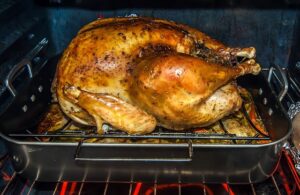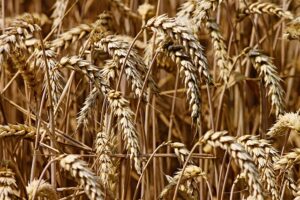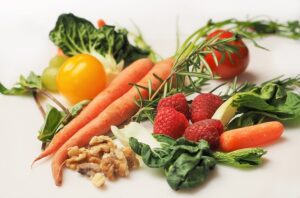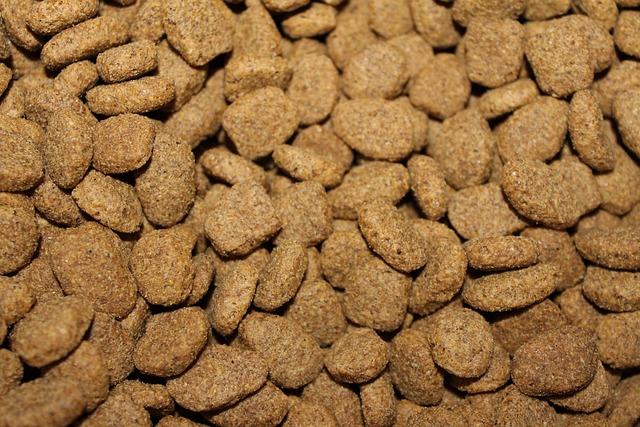This post contains affiliate links. See our Affiliate Disclosure Statement page for more details.
Table of Contents
Kibble Pros and Cons
In order to discuss the Kibble pros and cons, we need to identify precisely what Kibble is. Kibble is dry dog food, it is a conveniently packaged dog food product with an extended shelf-life that is designed to meet the daily nutritional needs of your dog.
It is by far the most popular food purchased by dog owners. In fact, supermarketnews.com (10/29/21) published the results of a survey that stated
- “94% of all US dog owners using kibble consistently over the past decade.”
However, feeding Kibble has not been without its detractors because of some of the negative aspects associated with it. The feeding of fresh/frozen, dehydrated, raw food, and homemade diets by dog owners has been growing steadily over the past decade.
So let’s look at the pros and cons of kibble and how kibble compares to the nutrition content of other dog food diets.
Pros of Kibble
One of the reasons Kibble has been the most popular choice of food for a majority of pet owners in the US as well as other countries is because it offers a number of benefits to both the dog and the owner.
So what are the pros of feeding your Boxer Kibble?
Pros of Kibble
- Kibble provides your dog with the essential macro and micronutrients to meet their daily nutritional requirements to keep them healthy and active. They include meats(proteins), grains, fruits and vegetables (carbohydrates), fats, and vitamins and minerals.
- Convenient and easy to store – Because it doesn’t require refrigeration, Kibble can be stored at room temperature for long periods without spoiling
- Cost-Effective – It is generally cheaper than wet dog food and other food source making it an attractive choice for pet owners.
- Wide Variety of Formulas and Flavors – A number of formula options are available to address specific health issues and food sensitivities.
Cons of Kibble
- Can be High in Carbohydrates – this can lead to weight gain and obesity in dogs and lead to other health issues.
- May Contain Fillers and Artificial Preservatives – These may be harmful to dogs with food sensitivities
- May not be as nutritionally complete as other dog foods such as wet food and fresh/frozen and raw food diets which contain a higher moisture content which is important for dogs who don’t get enough water.
Let’s take a look at each of the pros and cons individually and compare the information and research to determine if Kibble is the best option for your Boxer dog’s diet.
Kibble Pros and Cons – A Deeper Look

Kibble Pros and Cons – Pros – Nutrient Content
Kibble is purported to provide all of the essential macro and micronutrients to meet the daily nutritional needs to keep your dog healthy and active.
Let’s examine the macronutrients found in a majority of the leading brands of commercial kibble dog food.
Kibble Pros and Cons Macronutrients
Kibble Pros and Cons – Proteins

Proteins are one of the 3 essential macronutrients required to maintain health. Proteins are composed of amino acids, the “building blocks” of proteins, 10 of which are required for healthy active dogs.
Proteins are one of the main molecules in skin and hair. They are an essential component in the formation and production of enzymes and antibodies which are required for body functions such as digestion and the immune system.
For additional information on proteins and amino acids and their role in your Boxer’s health, read our articles
Best Protein Foods for Boxer Dogs – 10 Best Proteins to Keep Your Boxer Healthy and Active
Boxer Dog Diet – 5 Essential Nutrients to Keep Your Boxer Dog Healthy and Active
The table below identifies typical proteins commonly found in commercially produced Kibble based on ingredient listings. Also included are the source of the protein as well as potential issues we found researching the proteins.
| Protein | Source | Potential Issues |
| Chicken | Chicken Breast & Dark Meat Chicken (legs) | One of the 6 most common food allergens in dogs |
| Chicken-by-product Meal | “Chicken meal is prepared from the clean flesh and skin of chickens without or with bone derived from the whole carcass of poultry.” Source: Poultry By-Product, Hans H. Stein, illinois.edu | One of the 6 most common food allergens in dogs |
| Beef | Comes from the lens muscle tissue of the cow. | One of the 6 most common food allergens in dogs |
| Poultry By Product | “Parts of the animal that remain after the meat is removed. They may include lungs, spleen, liver, and kidneys.” Source: What Is the Poultry By-Product Meal in dog food? Purina.com | One of the 6 most common food allergens in dogs |
| Fish Meal | A commercial product made from whole wild-caught fish, bycatch, and fish by-products to feed farm animals“. Source: Fish Meal – Wikipedia | “Can be preserved with a chemical known as ethoxyquin. Likely not harmful to dogs.” Source: PetCareRx |
| Soybean Meal | Soybean meal is the by-product of the extraction of soybean oil. Soybean meal is usually classified for marketing by its crude protein content. Source: Soybean Meal, Feedipedia.org | One of the 6 most common food allergens in dogs |
| Lamb | Muscle Tissue from lamb | Not usually an issue. Contains EPA Omega 3’s which can provide an anti-inflammatory benefit. |
| Turkey | Turkey Breast and Dark Meat (legs and thighs) | Not usually an issue. Easily digestible by dogs. |
| Turkey Meal | A concentrated protein product derived by removing the moisture (water content) from turkey breast and dark meat. | Not usually an issue. Easily digestible by dogs. |
| Duck | Breast and Dark Meat (legs and thighs) | Not usually an issue. Easily digestible by dogs. Contains iron. |
| Pork | Muscle tissue from pig (swine) | Not usually an issue. Can be higher in fat content. |
| Dried Egg Product | Dehydrated and powdered eggs | One of the 6 most common food allergens in dogs |
We use Iams Proactive Health with Chicken & Whole Grain Recipe Large Breed and purchase through Chewy.com because of their superior service, selection, and value.
The proteins in the table above are currently in use in commercially marketed kibble dog food. They are approved proteins by the American Association of Feed Control Officials (AAFCO).
Sources for Ingredients: Ingredient listings from the following products
Iams Proactive Health with Chicken & Whole Grain Recipe Large Breed
Purina Pro Plan Complete Essentials Adult 7+ Shredded Beef Blend Beef and Rice Dry Dog Food
Purina One Lamb & Rice Formula
Only Natural Powerfood Chicken & Poultry Feast Grain Free Dog Food
Proteins are often associated as one of the leading causes of food allergies in dogs. This does not mean that eating these products will give your dog allergies, but dogs with a pre-disposition may have an allergic response.
For additional information on proteins’ role in food allergies, read our article
6 Foods that Lead to Food Allergies in Your Boxer Dog
We use and recommend Pet Care Rx for all our Over-the-Counter (OTC) and prescription drug products for our dog’s allergies and other prescribed medications. They offer great service and prompt delivery of the order.
Shop with PetPlus! Get up to 40% off sitewide, unlimited free shipping and more with the annual savings program only at PetCareRx.com!Kibble Pros and Cons – Carbohydrates

Carbohydrates are one of the 3 essential macronutrients. Carbohydrates are sugar molecules. When eaten carbohydrates (starches) are broken down into sugar (glucose), which is used by the cells for energy.
People sometimes confuse proteins and carbohydrates. One of the ways we distinguish between the two is the little rhyme.
“Carbohydrates grow in the ground and proteins walk around.” While not 100% accurate it is true most of the time.
So what are the typical carbohydrates used in commercially produced kibble?
| Carbohydrate | Source | Potential issues |
| Whole Grain Barley | Cereal Grain Grown Commercially | Contains a high level of gluten which can cause allergic reactions. The high fiber content may cause GI issues. Sources: WildEarth.com Masterclass.com |
| Whole Grain Ground Corn | Commercially Grown Grain (when it is fully mature and dried) | “As a whole grain, corn is not easily digestible. That’s because unless the kernel is first refined into a meal or flour and then cooked, corn would be very difficult for a dog to digest.” Source: The Truth About Corn in Dog Food. dogfoodadvisor.com |
| Dried Plain Beet Pulp | Fibrous material left after processing beets. Excellent source of fiber. | Can Lower the taurine levels in dogs fed lower protein diets. Taurine is an essential amino acid often associated with the condition of Dilated Cardiomyopathy in dogs (DCM). Source: Dietary Beet Pulp Decrease the Level of Taurine in Dogs fed a lower Protein Diet, Journal of American Science and Technology 2016 |
| Carrot (dried) | Commercially grown vegetable | Too many carrots, which contain sugar can cause stomach upset. The fiber in carrots in higher quantities can cause flatulence and diarrhea. Because of the low amount used and the dehydrating process carrots should not cause an issue. |
| Peas (dried) | Commercially grown vegetable | Peas and other legumes that are the main ingredients in a dog’s diet have shown an increase in the potential to develop Dilated Cardio Myopathy. Because peas are not the main ingredients in a vast majority of Kibble, there should be no potential issues. They are high in fiber and other minerals which can be beneficial to your dog. Sources: The simplefoodproject.com and dogsbestlife.com |
| Rice Flour | Commercially grown grain that is dried and pulverized into flour | No potential issues unless your dog has allergies to grains |
| Corn Gluten Meal | An organic by-product of corn grain wet-milling Source: Illinois.edu | “Corn gluten meal is an inexpensive and plant-sourced protein rather than a starch source. it is deficient in several essential amino acids, such as lysine, arginine, and tryptophan. So corn gluten meal needs to be balanced with other protein sources to ensure your dog gets these essential nutrients. Corn gluten meal is also not as digestible for dogs as normal, cooked corn.” Source: Corn in Dog Food – What You Need to Know, AKC.org, Gemma Johnstone (October 2022) |
| Dried Chickory Root | According to the experts at myollie.com, flaxseeds in their various forms are a good source of fiber, and protein and had shown some anti-inflammatory properties. A potential watch out Flaxseed can go rancid quickly without proper storage and usage | There should be no potential issues. Wheat Bran is used as a fiber to help the digestive system. There has been some research looking at enzymes used to improve the digestibility of Wheat Bran in the diet. It didn’t show any significant benefit compared to controls. Source: Enzyme use in kibble diets formulated with Wheat Bran for Dogs, NIH.gov |
| Wheat Bran | The hard outer layer of the wheat kernel is stripped off and milled to create wheat bran. Source: Healthline.com | An herb that is native to Europe and Asia. The root contains inulin, a starchy substance in the root that is ground and used to provide fiber. Source: WebMD |
| Flaxseed | Seeds from the Flax plant, are often ground into a powder | There should be minimal to no issues. Read our article Can Boxer Dogs Eat Apples? 3 Reasons To Look at The Nutritional Benefits and Risks |
| Lentils | “Lentils sometimes referred to as pulses, are a type of plant called a legume. Other legumes include beans, chickpeas, and sugar snap beans.” Source: What are Lentils/Cooking School – Food Network | Because they are used in small quantities, potential issues should be minimal. While lentils can be eaten by dogs because they provide a good source of fiber and protein. Too high a level can cause GI upset, flatulence, and bloating. There are also issues in that they don’t contain all the essential amino acids required by your dog if fed by themselves. Sources: Masterclass and iloveterinary.com |
| Dried Apples & Cranberries | Commercially grown fruit | Should be minimal to no issues. Read our article Can Boxer Dogs Eat Apples? 3 Reasons To Look at The Nutritional Benefits and Risks |
Kibble Pros and Cons – Fats

Fats are commonly used in dog food to add flavor, texture, and aroma. Fats used in dog foods are commonly preserved with Tocopherols, which according to Chewy.com, “are a naturally occurring preservative used in dog food to slow spoilage. They are part of a family of Vitamin E compounds and are commonly found in vegetable oils, nuts, fish, and green leafy vegetables.”
Typical examples of fats in Kibble include:
- Poultry Fat with Mixed Tocopherols
- Beef Fat with Mixed Tocopherols
- Soybean Oil
- Fish Oil
It is important to note that chicken, beef, and 6 soy-based products are one of the 6 leading causes of allergies in dogs. This does not mean that eating these products will give your dog allergies, but dogs with a pre-disposition may have an allergic response.
Tocopherols, the natural preservatives used to prevent spoilage are considered to be safe to use versus synthetic preservatives.
Kibble Pros and Cons – Micronutrients
In addition to the 3 Macronutrients: Proteins, Carbohydrates, and Fats, your dog also requires micronutrients. The two classes of micronutrients are
- Vitamins – Essential for normal body function cell growth and repair and immune system health
- Minerals – are essential for bone growth and support, important in red blood cell function and the immune system
Kibble Pros and Cons – Vitamins

There are 7 essential Vitamins dogs require to stay healthy and active. These include
- Vitamin A (Fat Soluble) – Found in carrots and other orange/yellow fruits and vegetables
- B Vitamins (water soluble) – found in cruciferous vegetables (broccoli, brussels sprouts), green leafy vegetables, chickpeas, peas, and liver
- Vitamin B1 (Thiamine Mononitrate)
- Vitamin B2 (riboflavin)
- Vitamin B3 (Niacin)
- Vitamin B5 (Calcium Pantothenate)
- Vitamin B6 (pyridoxine hydrochloride)
- Vitamin B7 (folic acid)
- Vitamin B12 (cobalamine)
- Vitamin C (Water soluble) – is found in citrus fruits, bell peppers, strawberries, tomatoes, cruciferous vegetables, and potatoes (White)
- Vitamin D (Fat Soluble) – often called the “sunshine vitamin” because sunshine is needed for the synthesis of Vitamin D. However, dogs are able to synthesize Vitamin D themselves. Found in Cod Liver Oil, Salmon, Tuna, and other Vitamin D fortified foods.
- Vitamin E (Fat Soluble) is found in pumpkin, almonds, peanuts, peanut butter, beets, and spinach.
- Vitamin K (Fat Soluble) – is found in Geen Leafy Cruciferous vegetables, soybean and canola oils, and lettuces. Dogs produce it in their Gut so it is not required in their food.
- Choline – is important for brain, heart, and liver function. Found in liver, egg yolks, and red meat.
Kibble Pros and Cons – Does Kibble include essential Vitamins
| Kibble Ingredient | Vitamin | Essential Vitamin (Yes/No) |
| Vitamin C Supplement | Vitamin C | Y |
| Calcium Pantothenate | Vitamin B5 | Y |
| Thiamine Mononitrate | Vitamin B1 | Y |
| Vitamin B12 Supplement | Vitamin B12 | Y |
| Vitamin A Supplement | Vitamin A | Y |
| Niacin | Vitamin B3 | Y |
| Riboflavin Supplement | Vitamin B2 | Y |
| Pyridoxine hydrocholoride | Vitamin B6 | Y |
| Folic Acid (Biotin) | Vitamin B7 | Y |
| Vitamin D3 Supplement | Vitamin D3 | Y |
| Vitamin E supplement | Vitamin E | Y |
| Choline Chloride | Choline | Y |
Based on the ingredient listings of commercially available Kibble Dry food, Kibble contains all the necessary vitamins a dog needs to stay healthy and active. Since Dogs can formulate Vitamin K in their gut and have a constant source of Vitamin K it is not required in food.
Kibble Pros and Cons – Minerals

Minerals are an essential part of your dog’s diet in order to keep them healthy and active into and throughout their senior years. There are two classifications of minerals that can impact your dog’s diet & nutrition, and overall health and well-being. These are
- Macrominerals – These include Calcium, Phosphorus, Sodium, Chloride, Magnesium and Potassium and Sulphur
- Micronutrients – iodine, copper, zinc, chromium, iodine, selenium, manganese, and fluorine.
Source: Mineral: Finding the Right Sources in the Best Dog Foods – PetMD.com
Both the macro and microminerals are essential in aiding in the body processes in your dog’s body. They are important in
- Bone and tooth growth and formation
- Immune system
- Functioning of Blood cells
- Strong immune system
Let’s focus on the essential minerals and determine whether these minerals are incorporated in the kibble d formulations of commercially marketed dog food.
The table breaks down the ingredient, their type or function, and whether they are essential ingredients
| Ingredient | Type/function | Essential Mineral (Y/N) |
| Dicalcium phosphate | Calcium (Macronutrient) and Phosphorus (macromineral) | Y |
| Potassium Chloride | Potassium (Macronutrient) | Y |
| Choline Chloride | Choline (macronutrient), Chloride (macromineral) | Y |
| Calcium Carbonate | Calcium (macronutrient) | Y |
| Ferrous Sulfate | Iron (micromineral) | Y |
| Zinc Oxide | Zinc (micromineral) | Y |
| Sodium Selenite | Sodium (macromineral) | Y |
| Manganese Sulfate | Manganese (micromineral) and Sulfur (macromineral) | Y |
| Potassium Iodide | Potassium (macromineral) and Iodine (micromineral) | Y |
| Zinc Proteinate | Zinc (micromineral) | Y |
| Copper Proteinate | Copper (micromineral) | Y |
| Calcium Iodate | Calcium (macromineral) and Iodine (micromineral) | Y |
The only essential Macromineral that was not listed on the ingredients list was magnesium. Otherwise, Kibble provides all the essential minerals required to keep a Boxer dog healthy and active.
Kibble Pros and Cons – Does Kibble Provide Essential Nutrients
Based on the results of research, Kibble has all of the macro and micronutrients required to keep your dog active and in good health. While there may be some potential issues based on the individual’s needs and health of your Boxer dog, Kibble provides a balanced diet.
Kibble listed quality proteins as their main ingredients, followed by approved carbohydrates and fats. Kibble also contains all of the essential vitamins and minerals your dog requires on a daily basis.
Kibble Pros and Cons – Additional Pros
In addition to the pros of being a nutritionally balanced dog food, we also identified 3 additional pros which we will touch on briefly here.
Kibble is Cost-effective
The quality, type, and brand of kibble you purchase have a direct impact on its cost. Kibble made with organic or all-natural ingredients tends to be more expensive than mass-market kibble.
The table below shows the average price for Kibble based on Brand and retailer. Note: prices may change, these are current average costs for ranges in the cost of kibble.
| Retailer | Iams Proactive Health With Chicken & Whole Grain Recipe Large Breed | Purina Pro Plan Complete Essentials Adult Shredded Beef Blend | Purina One Lamb & Rice Formula |
| Chewy | 30lb bag | 34lb bag | 40lb bag |
| Amazon | 30lb bag | 18lb bag | 31.1lb bag |
| Pets Warehouse | 30/lb bag | N/A | 31.1/lb bag |
Kibble Pros and Cons – Variety of Flavors and Nutrition Types
One of the benefits of Kibble is that it is available in a variety of flavors including chicken, beef, lamb, salmon, and more.
In addition, manufacturers of Kibble have developed formulas to target specific nutritional or health needs for your dog. Some of these include
- No Corn, Wheat, or Soy
- Grain Free
- High Protein
- Sensitive Digestion
- Chicken Free
- Limited Ingredient
- Weight Control
- Senior
All these varieties are available at Chewy.com. We purchase our dog food from Chewy.com because they offer a great selection and have fast delivery and great customer service.
Save 35% on Your First Chewy Autoship Order
Pros and Cons of Kibble – CONS
We looked at the pros and the benefits to both the owner and your Boxer. Now, let’s focus on the cons of feeding your dog kibble because everything has both positive and negative attributes.
Can Be High In Carbohydrates

According to the Article Dog Food Nutrition: A Guide To Dog Food Nutrients, PetMD.com, Dr. Tiffany Tupler, DVM, “Dry dog foods typically contain 30-60% carbohydrates, with the majority being starch. Grains such as corn, rice, wheat, barley, and oats provide the bulk of starch and are well tolerated and absorbed in dogs due to commercial preparations.”
Carbohydrates are important in a number of body processes.
- Provide Energy for movement, bodily functions, and brain functioning. They are sugars that are broken down into glucose and used by the body for energy.
- Provide heat – As energy is produced, it helps generate heat for the body
- Aids in Digestion – Many carbohydrates have medium to high levels of fiber which aid in digestion.
While carbohydrates are a necessary Macronutrient, too many carbohydrates can lead to weight gain and obesity, which in turn can lead to health problems including
- Diabetes
- Hip and Joint Problems
- Cancers
- Heart Disease and Hypertension (high blood pressure)
So we know based on Dr. Tuplers article, that kibble contains between 30 to 60% carbohydrates. But what is the recommended amount of carbohydrates for your Boxer? Let’s look at a few factors that affect carbohydrate consumption.
Exercise
Boxers are a high-energy breed that can burn a lot of calories when receiving the appropriate amount of exercise and mental stimulation. For information on exercise and mental stimulation for Boxer dogs, read our articles
7 Best Common Calorie Burning Exercises for Boxer Dogs and Their Owners
9 Best Ways To Mentally Stimulate Your Boxer for A Happy and Obedient Companion
The Boxer breed is pre-disposed to weight gain and obesity if not receiving enough exercise or if they are fed a high-calorie and/or high-carbohydrate diet.
Other factors include
- Reproductive status – intact or neutered/spade
- Age
Now we have a background for the function of carbohydrates, the effects of too many carbohydrates, and the factors that affect carbohydrate consumption, let’s answer the question is Kibble too high in Carbohydrates?
According to a paper published titled Your Dog’s Nutritional Needs, A Science-Based Guide For Pet Owners, nationalacademies.org,
“Scientific research has shown that an adult dog’s daily diet can contain up to
50% carbohydrates by weight, including 2.5–4.5% from fiber.”
Based on this data Kibble which contains >50% carbohydrates would be on the high end of nutritional needs. Kibble containing >50% could be considered a kibble too high in carbohydrates.
Therefore, look for kibble that contains 50% fewer carbohydrates.
Kibble Pros and Cons – May Contain Fillers and Artificial Preservatives
Most of the leading manufacturers of commercial kibble use tocopherols and mixed tocopherols, which are naturally derived and part of the Vitamin E family of compounds as their preservatives to prevent spoilage (especially the fats from becoming rancid).
However, many dog food brands use synthetic chemicals such as BHA (orbutylated hydroxyanisole), a synthetic antioxidant, and BHT (orbutylated hydroxytoluene) to preserve fats to prevent them from going rancid and to preserve flavor.
These two compounds are both approved by the FDA for use in human and dog food. However, they are not without their controversy. Many consumers are avoiding these products because there has been some published information that they cause cancer in laboratory animals.
In fact, BHA is on California’s list of cancer-causing agents.
If you are concerned with the use of synthetic preservatives in your dog’s food, look for products that contain tocopherols as their preservatives instead of BHA and BHT.
If preservatives are a concern in kibble, other options include fresh and frozen foods, raw diets, and homemade meals.
For fresh/frozen foods we recommend the following two brands

Kibble Pros and Cons – Nutritional Value and Moisture Content
One of the big arguments against the use of kibble is that it is lower in nutrient value because it doesn’t contain as much moisture as wet, fresh/frozen, homemade, and raw dog food, which is especially important for dogs not getting enough water.
So how does the moisture content stack up? According to Petfoodinstitute.org, the moisture content is
- Dry Kibble – between 10-12% moisture content
- Wet Dog Food – moisture content 75-78%
- Fresh Dog Food – contains 77% natural moisture (source: Dogfoodadvisor.com)
Based on this data, Kibble does lack the moisture content of other types of dog food, which can have an impact on dogs who do not get enough water and moisture from their diet. It is unclear what percentage of dogs have this issue because it would be difficult to collect the data to determine the impact.
Kibble Pros and Cons – Conclusions
Kibble has been the leading dog food type among US dog owners for the past several decades, with 94% of US dog owners using Kibble as part of their dog’s diet.
Pros of Kibble
The benefits to both the dog and owner include
- Kibble provides your dog with the essential macro and micronutrients to meet their daily nutritional requirements to keep them healthy and active. They include meats(proteins), grains, fruits and vegetables (carbohydrates), fats, and vitamins and minerals.
- Convenient and easy to store – Because it doesn’t require refrigeration, Kibble can be stored at room temperature for long periods without spoiling
- Cost-Effective – It is generally cheaper than wet dog food and other food sources making it an attractive choice for pet owners.
- Wide Variety of Formulas and Flavors – A number of formula options are available to address specific health issues and food sensitivities.
The research showed that kibble delivers on all of the pros including providing the macro and micronutrients to meet your dog’s daily nutritional requirements.
Cons of Kibble
The cons of feeding kibble to your dog include
- Can be High in Carbohydrates – This can lead to weight gain and obesity in dogs and lead to other health issues.
- May Contain Fillers and Artificial Preservatives – These may be harmful to dogs with food sensitivities
- May not be as nutritionally complete as other dog foods such as wet food and fresh/frozen and raw food diets which contain a higher moisture content which is important for dogs who don’t get enough water.
The cons have some validity to them based on the research.
The choice to feed your dog kibble is a personal choice that best suits your lifestyle and the nutritional needs of your Boxer.
It is recommended to consult your veterinarian to determine the best dog food diet for your Boxer.
The number of owners feeding their dogs fresh/frozen, raw, and homemade diets is increasing. These types of foods for feeding your Boxer are a personal choice and should be based on what’s best for your Boxer.
Kibble will continue to have a prominent role in dog food aisles and dog bowls because of its easy storage, cost-effectiveness, and complete nutritional value.
The research showed that Kibble’s pros outweighed the cons. Even though Kibble can have its detractors it still provides complete nutrition in a convenient package.
We hope this provides you with the information you need to make informed decisions on whether to feed your dog kibble.

Discoverboxerdogs.com are Mary and Chris Kustanbauter. We reside in Red Lion, PA with our two Boxers, Duke and Katie, who are both rescue dogs. We have been working with Adopt A Boxer Rescue for the past 17 years and have adopted 5 Boxers from this fine organization. To learn more visit our Home, Boxer Dog Family, and Blogs Pages Visit us on social media on Facebook – Discoverboxerdogs.com, Instagram, and Pinterest.

